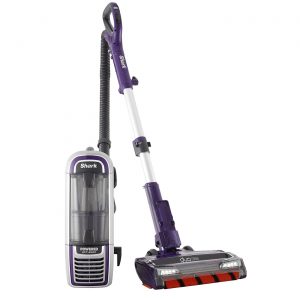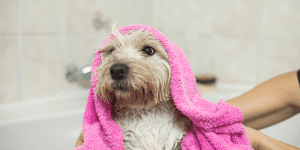Natural Flea Control.
Fleas can make the lives of both dogs and owners very miserable. Most of us begin to feel itchy just at the very thought of these pesky little parasites! While the winter months usually give everyone some respite, fleas can lay dormant in carpets and soft furnishings. Central heating can bring these creatures to life, even in previously unoccupied houses. However many people aren’t keen on chemical flea control. Holidays4Dogs looks into natural flea control.
There are many products on the market which can eradicate fleas from dogs and your home. However, some owners prefer to use more natural ways to keep fleas at bay. This is particularly important as topical flea treatments are known to harm the environment.
If your dog has a particularly heavy infestation however, or is susceptible to allergic reactions to fleas it is essential that you seek veterinary advice in order to deal with the problem swiftly and avoid any possible secondary infections.
It is also worth noting, if you have a lot of pets, the natural approach may not be enough to ensure your home is kept flea free. Some home boarding establishments won’t accept dogs unless they have evidence of flea treatment. In this case, it is recommended you consider proprietary flea products as the first port of call. You can of course try natural methods, in addition.
Where do fleas live?
Fleas thrive exceptionally well in warm environments. They live both on, and off the host animal. In order to control fleas on your dog you also need to address the eggs, larvae and pupa which will be living in your home too. Fleas around the home will infest soft furnishings and carpets. Similarly, the commonly thrive edges of the skirting boards, under radiators and other nooks and crevices.
Alternative flea control.
Apple cider vinegar in the dog’s water bowl is reputed to repel fleas by a chemical reaction in the blood, which fleas find distasteful.
It is suggested one tablet of homeopathic sulphur can prevent fleas from biting.
Homeopathic Pulex can soothe any irritation caused from flea bites.
Brewers Yeast, rich in B vitamins, is said to repel parasites. Administer orally, or brush into the coat.
The importance of treating the home environment.
If you suspect fleas are living in the carpet, vacuum regularly to pick up eggs and larvae. If you place a flea collar into the vacuum bag, this will kill off any fleas and prevent them from developing and re-infesting the home. This is still using chemicals, but at least not on your dog.
 Immediately after vacuuming, throw away the contents of the dust container.
Immediately after vacuuming, throw away the contents of the dust container.
Many people swear by a simple mixture of salt and baking soda. This is said to dehydrate and, therefore, kill developing fleas. Sprinkled the mixture into the carpet, then sweep with a stiff broom so that it penetrates deep into the fibres. Since fleas hatch around every three days, you may want to repeat this process over three to four days.
Leave the mixture on the carpet, over night if possible, and then vacuum thoroughly using the crevice tool to get into all areas of the room. If your dog is already suffering from flea bites, prevent the dog from lying on the salt as this may aggravate any bite areas.
If you would prefer to ‘blitz’ the carpets with a proprietary flea product do make sure that you purchase one which kills the eggs and not just the larvae. They do differ and many products available in supermarkets do not kill flea eggs, so it is advisable to check the label. Your vet will be able to supply a product that kills flea eggs.
Bathing the dog.
One other way, tried and tested by the author, is to bath, bath, bath! Bathing is a great natural flea control method. However, for some people, this may not be practical, especially those with large and giant breeds.
However, adult fleas drown when submerged. Any flea dirt – which the larvae feed on – is washed off the dog. Additionally, dipping the dog in water will soothe any existing bite sites. You could use a mild medicated shampoo – the type used for babies.
You can also purchase a flea comb, use conditioner and comb out any adult fleas while the dog is in the bath. But, this is a long process as it involves washing the dog every other day, for about a week.
For people with very large, or heavily coated breeds this may not be practical. Taking the dog swimming is also an option as, again, this will help to drown fleas and clear the coat of flea dirt. Visit a safe swimming spot as frequently as you. This will help eradicate fleas without resorting to chemicals. On the other hand, if you are using regular topical flea treatments, do bear in mind this can enter the watercourse and thus, the environment. The same is true of bathing traditionally flea treated dogs – the chemicals go down the drain and end up in the environment.
Conclusion.
As we have mentioned, no amount of treating the dog naturally, or otherwise, will eradicate a heavy infestation of fleas completely. It’s also important to treat the house at the same time. 80-90% of fleas live, not on the host animal, but in the environment. In addition, any other pets must also be treated at the same time.
However, natural flea control is well worth considering for lighter infestations and as a preventative measure. Indeed, it is important to weigh up the risk factors when it comes to the potential for fleas on your pet.



